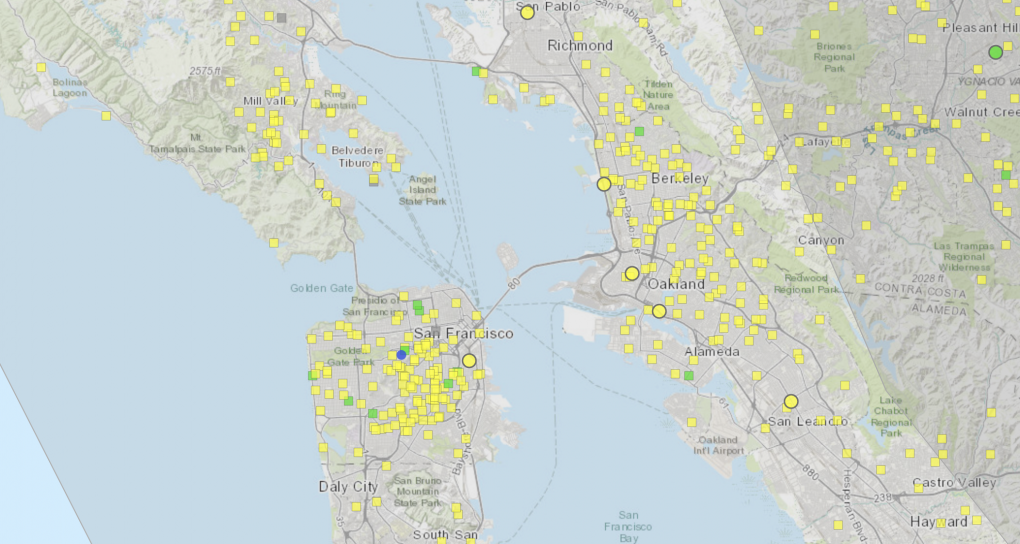Bay Area residents have become used to the ritual of checking air quality maps for places to escape wildfire smoke that has wafted over from burning forests and chapparal near and far.
During the 2018 Camp Fire, AirNow, an air quality website maintained by a partnership of states, the federal government, Canada and Mexico, crashed because it could not handle so many people flocking online to put numbers to what their noses were telling them: The air seems really bad.
The failure sent web users rushing to alternative, unofficial websites like the interactive, crowdsourced map maintained by PurpleAir, a manufacturer of low-cost air monitors.
But during this year's wildfires, users have noticed a discrepancy between what official sites are reporting and the readings displayed on PurpleAir.
So, What’s the Deal?
Broadly put, PurpleAir provides more localized, more current and less accurate readings than AirNow.
A couple of weeks ago, the EPA and the U.S. Forest Service launched a pilot project of what some may consider to be the Holy Grail of air quality maps: combined readings taken from PurpleAir’s low-cost sensors and those from official government monitoring devices, all in a single map. Click here or on the image below to access the map; the circles represent official government monitors, the squares indicate PurpleAir sensors, and the triangles show temporary monitors set up by federal agencies.

“While these [unofficial] sensors don’t meet the rigorous standards required for regulatory monitors, they can help you get a picture of air quality nearest you, especially when wildfire smoke is in your area,” the website states.
PurpleAir readings and those from government sensors like the ones maintained by the Bay Area Air Quality Management District differ in several key ways: speed, accuracy and placement.
Users of PurpleAir can toggle between real-time data and readings averaged over the last 10 or 30 minutes. The data comes from the commercial sensors the company sells, which members of the public install on porches, yards and other neighborhood sites. The readings can be helpful for people deciding whether to go for a walk or engage in other outdoor activity. (Remember to deselect “indoor sensors” to see outdoors-only readings.)
The AirNow site displays hourly, not real-time readings. The government sensors that send data to AirNow are very expensive, state-regulated and regularly calibrated by scientists to accurately measure the density of wildfire ash or other particles in the air. But they are more sparsely located than PurpleAir’s network of hundreds of monitors in the region. In contrast, PurpleAir’s devices rely on a laser to count the particles in the air, and use an average density to determine air quality at the monitor's location. The calculation is an estimate, however, especially during fire season, as wood-smoke particles have a different density from gravel dust or other pollutants.
Comments
Post a Comment